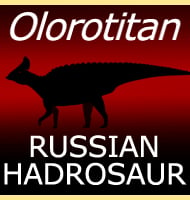Olorotitan
In Depth Hadrosaurs have a long association with North America, but they are known from other areas like Asia where they are usually represented by incomplete remains. Olorotitan however was almost complete and became widespread through palaeontology circles as the most complete lambeosaurine hadrosaurid outside of North America. With eighteen vertebrae Olorotitan is also remarkable … Read more
